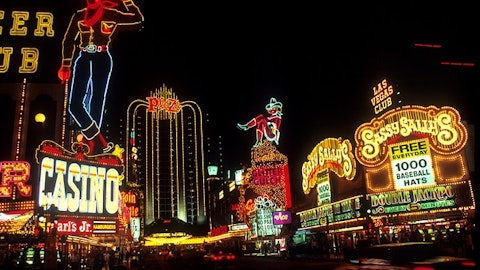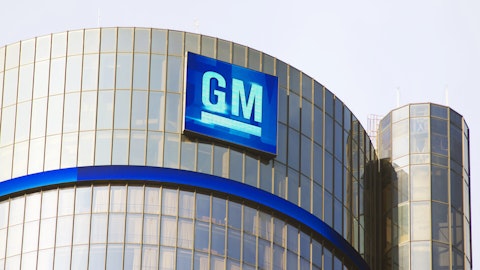The shares of Wynn Resorts, Limited (NASDAQ:WYNN), Las Vegas Sands Corp. (NYSE:LVS), and MGM Resorts International (NYSE:MGM) started the day on a lower note after Macau posted another month with declining gaming revenue. According to the report, Macau’s gaming revenue was down 34.5% in July in comparison with the prior year period. The only relief was the fact that the decline was slightly better than the 36% decline witnessed in June. Macau reported gaming revenue of $2.3 billion in July better than the revenue of $2.17 billion reported in June 2015. The analysts were expecting a drop of 34% to 35% in the monthly revenue.
The shares of Wynn Resorts, Limited (NASDAQ:WYNN) were down 1.50% on Monday intraday trading, whereas Wynn Macau Ltd. (HKG:1128) closed the day 4.62% lower. Las Vegas Sands Corp. (NYSE:LVS) is marginally down by 0.80%. On the other hand, MGM Resorts International (NYSE:MGM) was up 1.40%, although its Chinese subsidiary, MGM China Holdings Ltd (HKG:2282), closed 3.65% lower at the end of the day.

With the drop in revenue in July, Macau has reported consecutive drop in revenue for the past 14 months, primarily because of heightened official scrutiny in the area along with a slowing down Chinese economy. However, the revenue is improving after a maximum drop of 48.6% in February with comparatively easing figures. With the drop in July, the gaming industry has reported a drop of 36.7% year-to-date. As per analysts’ expectations, the industry might end this fiscal year with a drop of 30%, although it is likely to reiterate in 2016 with an expected gain of 4.5%. Further, the analysts are expecting the revenue to improve in the second half because of upcoming resort and casino launches in Macau. The local government is likely to implement some improvement measures if the revenue falls below $2.30 billion, as reported by the local media.
What makes this overall drop a bit disheartening is the fact that the Macau regulatory bodies eased the visitation limits for Chinese customers earlier in July, including a stay of seven days against prior 5-day approval, along with two monthly visits in comparison with the two visits allowed per 60 days before.
At the end of the first quarter, Wynn Resorts, Limited (NASDAQ:WYNN) had an aggregate investment of $936.81 million from 25 hedge funds that we track at Insider Monkey. These figures were better than the prior quarter value of $878.66 million from 40 investors. Mason Hawkins’ Southeaster Asset Management was the largest shareholder of gaming company in our database with 4.57 million shares valued at $575.75 million.
The hedge fund sentiment was comparatively lower for Las Vegas Sands Corp. (NYSE:LVS) with 24 hedge funds holding $390.17 million worth of stock, versus 33 funds with $495.07 million a quarter earlier. Josh Resnick’s Jericho Capital Asset Management held 1.12 million shares of the casino operator valued at $61.78 million at the end of March.
Moreover, MGM Resorts International (NYSE:MGM) witnessed an inflow of capital during the first three months of the year to $1.76 billion from $1.45 billion a year earlier, while the number of hedge funds holding positions in the company was up to 58 from 45. Among the funds we track, York Capital Management, led by James Dinan, had 9.94 million shares of MGM Resorts in its portfolio valued at $209.09 million.
Why are we interested in the 13F filings of a select group of hedge funds? We use these filings to determine the top 15 small-cap stocks held by these elite funds based on 16 years of research that showed their top small-cap picks are much more profitable than both their large-cap stocks and the broader market as a whole. These small-cap stocks beat the S&P 500 Total Return Index by an average of nearly one percentage point per month in our backtests, which were conducted over the period of 1999 to 2012. Moreover, since the beginning of forward testing from August 2012, the strategy worked just as our research predicted, outperforming the market every year and returning 123% over the last 35 months, which is more than 60 percentage points higher than the returns of the S&P 500 ETF (SPY) (see more details).
Disclosure: None




